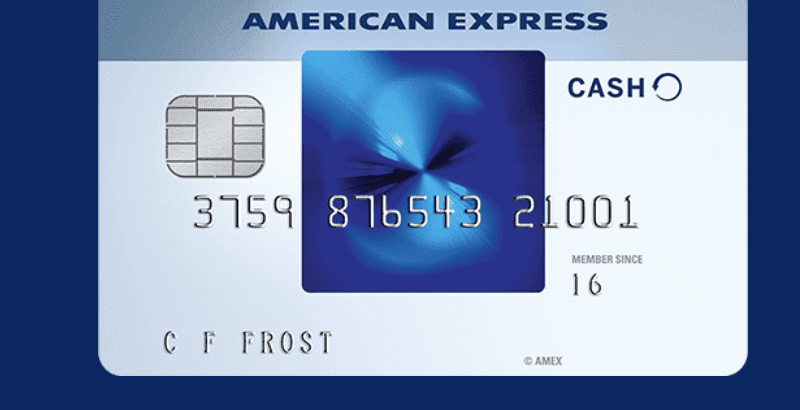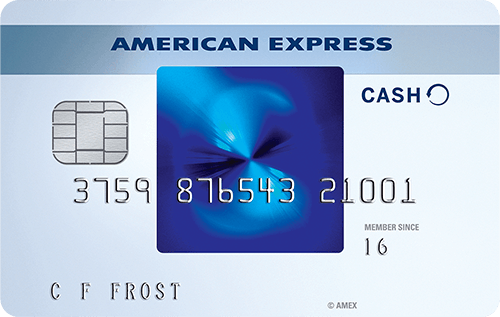The Blue Cash Everyday® Card from American Express is one of the most popular cash back credit cards from American Express. It’s a pretty straightforward card designed to build up rewards for spending at supermarkets, gas stations, and department stores but are the Blue Cash Everyday rewards valuable enough to warrant your attention? Here’s a close look at the card.
Update: Some offers are no longer available — click here for the latest deals!
Tip: Use WalletFlo for all your credit card needs. It’s free and will help you optimize your rewards and savings!
The Blue Cash Everyday® Card from American Express
- $150 statement credit after you spend $1,000 in purchases on your new Card within the first 3 months.
- 3% cash back at U.S. supermarkets (on up to $6,000 per year in purchases, then 1%).
- 0.0% introductory APR for the first 12 months.
- Balance transfers: 0.0% introductory APR for the first 12 months on balance transfers requested within 30 days of account opening.
- No annual fee
- Foreign transaction fee: 2.7%
Blue Cash Everyday sign-up bonus
- $150 statement credit after you spend $1,000 in purchases on your new Card within the first 3 months.
The $150 sign-up bonus for a no annual fee credit card is pretty competitive with other similar cards like the Chase Freedom. Considering many no annual fee cash back cards don’t even offer sign-up bonuses, this is a major plus. But this sign-up bonus can get even more lucrative at times and offer as much as $250 back so always be on the lookout for higher offers.
It’s worth noting that the Amex Blue Cash Everyday rewards are not Membership Rewards, so they can’t be transferred to airline partners. Instead, they care considered “Reward Dollars.” These Reward dollars can be redeemed for statement credits in increments of $25.
Not being able to transfer your points to travel partners isn’t necessarily a bad thing. Many people prefer the simple redemption schemes of cash back so you don’t have to bother with complicated award charts and redemption policies. If you’re looking for a card that earns straightforward cash back then the Blue Cash Everyday rewards are probably for you.
If you are interested in earning Membership Rewards, you can look into the Amex EveryDay Credit Card.
Blue Cash Everyday bonus categories
The Blue Cash comes withs very competitive bonus categories that earn the following rates.
- 3% Cash Back at U.S. supermarkets, up to $6,000 per year in purchases (then 1%)
- 2% cash back at U.S. gas stations
- 2% Cash Back at select U.S. department stores
- 1% Cash Back on other purchases.
What counts as a supermarket for Blue Cash Everyday rewards?
Here’s link to the official terms that explain the different reward categories.
Is states that “Superstores, convenience stores and warehouse clubs are NOT considered supermarkets.”
It also excludes:
• Specialty stores (e.g., fish markets, cheese shops, wine shops, and other specialty food stores ) • Superstores (e.g. Amazon, Target and Wal-Mart) • Warehouse clubs (e.g. BJ’s Club)
The terms also provide examples of merchants that qualify as supermarkets (this is not a complete list). these include:
- Gristedes
- Foodtown
- Meijer
- Pathmark
- Shoprite
- Stop and Shop
- Vons
- Whole Foods
- Winn-Dixie
- Online supermarkets such as FreshDirect
What counts as a department store for Blue Cash Everyday rewards?
Examples of the department stores that will earn 2% are the following:
- Bealls
- Belk
- Bloomingdale’s
- Bon Ton Stores
- Boscov’s
- Century 21 Department Stores
- Dillard’s
- J.C. Penney (JCP)
- Kohl’s
- Lord & Taylor
- Macy’s
- Neiman Marcus
- Nordstrom
- Saks Fifth Avenue
- Sears
The 2% back rates are nice but are not exceptional considering that you can get 2% back with many cards now-a-days. However, the 3% back on supermarket purchases is very nice and very competitive for a no annual fee credit card.
Also, sometimes this card comes with additional promotions like getting 10% back at US Wireless Telephone Service Providers on up to $2,000 spent a year or 10% back at U.S. Restaurants on the Card within the first 6 months of Card Membership, up to $200 back.
Foreign transaction fee
The Amex Blue Cash Everyday comes with a 2.7% foreign transaction fee so this is not a card that you want to use for your travel expenses.
Interest free intro period
The American Express Blue Cash Everyday comes with a 0.0% introductory APR for the first 12 months. So if you’re looking to make some large purchases that you might not be able to pay off immediately this could be a good option for you.
What bout the Blue Cash Preferred® Card?
The Blue Cash Preferred® Card from American Express is the Blue Cash Everyday’s big brother. That card earns 6X at supermarkets up to $6,000 spent per year but comes with a $95 annual fee. So you’re earning double on supermarkets with the Preferred but paying $95 more for those earnings.
So if you divide the difference in annual fees of $95 by 3 cents, it shows that if you spend $3,166 a year at supermarkets it makes sense to go with the Blue Cash Preferred.
For example:
- 3% of $3,166 = $95
- 6% of $3,166 = $190
Anything spent on supermarkets beyond $3,166 while using the Blue Cash Preferred will amount to higher earnings, despite the $95 annual fee you’re paying. (And that’s not even factoring in the increased earnings on the categories like gas that the Blue Cash Preferred earns.)
Final word
The Blue Cash Everyday is a solid cash back credit card. If you don’t want to bother at all with an annual fee and you spend a few thousand dollars at supermarkets then this card can be a perfect selection. However, if you spend over $3,166 on supermarkets you might as well go with the Blue Cash Preferred since it offers a more valuable return for your spending. And as always don’t forget to look into the American Express application rules before you apply.
Daniel Gillaspia is the Founder of UponArriving.com and the credit card app, WalletFlo. He is a former attorney turned travel expert covering destinations along with TSA, airline, and hotel policies. Since 2014, his content has been featured in publications such as National Geographic, Smithsonian Magazine, and CNBC. Read my bio.



